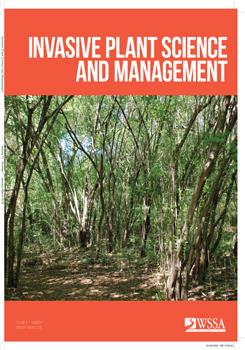Native forbs are an essential component in the functioning and diversity of prairie communities. Aminocyclopyrachlor (AMCP) will effectively control many noxious weeds that invade prairie communities; however, its efficacy on desirable broadleaf plants is relatively unknown. Few field studies have been reported, and locating adequate populations of native forbs for evaluation of tolerance to herbicides is difficult. The susceptibility of 10 prairie forb species to AMCP was evaluated in the greenhouse. Species were chosen to correlate with a field study of AMCP and a previous greenhouse experiment. AMCP was applied at 0, 35, 70, and 105 g ha-1 with a methylated seed oil (MSO) plus silicone-based non-ionic surfactant (NIS) blend at 0.25% v/v when plants reached the growth stage simulating a spring treatment for weed control. Blueflag iris (Iris versicolor L.) and harebell (Campanula rotundifolia L.) were relatively tolerant and would likely be unharmed following an application of AMCP in the field. Wild licorice (Glycyrrhiza lepidota Pursh), prairie wild rose (Rosa arkansana Porter), purple prairie clover (Dalea purpurea Vent.), and wild bergamot (Monarda fistulosa L.) were moderately susceptible to AMCP; however, plants might regrow in the field, since some survived at the highest AMCP application rate (105 g ha-1) evaluated. Skyblue aster [Symphyotrichum oolentangiense (Riddell) G. L. Nesom], Canada goldenrod (Solidago canadensis L.), blue cardinal-flower (Lobelia siphilitica L.), and blacksamson echinacea (Echinacea angustifolia DC.) were susceptible to AMCP even when applied at 35 g ha-1. The susceptibility of greenhouse-grown forbs to AMCP was the same or similar to species evaluated in the field and can be used to predict native forb tolerance in the field.
How to translate text using browser tools
1 March 2018
Native Forb Response to Aminocyclopyrachlor
Travis R. Carter,
Rodney G. Lym
ACCESS THE FULL ARTICLE
Aminocyclopyrachlor
native forb
tolerance
wildflowers





